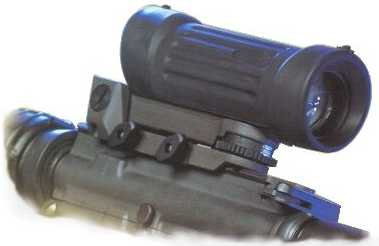
Optics

As we
all know by now any lack of quality in our training, weapon, ammo or
optics will not produce the groups we need to call ourselves expert
marksmen.
Nomenclature
All scopes will have a few of the same basic parts.
Objective Lens:
|
|
Range Repeatability
What this means is as long as you do not make an adjustment to your elevation or windage your rounds will impact in the same spot.
Lets say you have been shooting at 100 yards all day and you dial in some elevation so you can shoot at 200 yards. After a while you want to come back to 100 yard and finish up the day.
It took one and a half inches of elevation for you to shoot at 200 yards. You dial your scope back to its original setting for 100 yards but now your rounds are impacting the target at a different spot than before.
Your scope has no repeatability.
Inside your scope are little gears or plates that move your crosshairs so you can adjust the elevation or windage. If your scope will not come back to its original setting these gears or plates are probably worn out.
Mounting your Scope
There are a few very important things to remember when mounting your scope to your weapon.
1st is quality mounts. When you fire your rifle, the recoil that you feel is also felt by your scope, mounts and screws. Screws will become loose and your scope will move.
Most experts now use screws called torx. You can get a better bite on these without striping out the heads. If your scope did not come with this type of screw, ask your firearms dealer for a set. They are well worth the small price.
Proper Eye Relief:
When you put your rifle up to your shoulder, there should be no dark edges around the outside of your scope. If you have to move your head back and forth, you have improper eye relief.
Your reticle is level:
If your reticle is not level your shots will follow that direction with range. Lets say you are canted just a bit to the right. As you increase range your shot will head to the right. If you dial in some windage your shot will move up or down. A simple way of leveling your scope is to set your rifle on its bypod or sandbags and look at your scope about 3 feet away. You can see your cross hairs in the center with the edges of your scope black. Now turn your scope so that your vertical cross hair is in line with the center of your buttplate. After you have done this check your eye relief to make sure it did not move.
Bore Sighting
Bore sighting is just what it sounds like. You look through the barrel at an object and then adjust your reticle to the same object.
If you can not look through your bore after removing the bolt you will need to use a collimator. This is a device that you install in the end of your barrel. It has cross hairs and grid squares that you will line your reticle up to.
25 Yard Bore Sighting
Place your rifle on a table at the 25 yard line of your favorite range.
A bypod and beanbag are a must. If you do not have a bypod, you will need to sandbag your rifle so it will not move.
Next remove your bolt and look through the bore. Move your rifle around until you see the target. I use an Outers 50 foot slowpoke pistol target. It has a 1 inch bulls eye that works great.
Once you have the target sighted in the bore, look through your scope. Now dial the reticle to the target, taking care not to move your rifle.
Once you have your bore and scope lined up, dial your scope down about 3 to 4 inches.
Move over to the 100 yard line and take your first shot with your new scope.
If you have done this correctly your shot will be real close.
Make your adjustments and finish zeroing in.
100 Yard Bore Sighting
Same as above except you are on the 100 yard line. I still use the same pistol target but once lined up, dial your scope up about 2.5 to 3 inches.
Mastering Your Telescopic Sight
The biggest obstacle you will encounter is your lack of time to train. With this in mind, focus on one particular aspect of marksmanship each session of training. This applies to all components of your weapon, optics and ammo, as well as the mental and physical aspects of your training. In this section we will only cover the aspects having to do with telescopic training.

